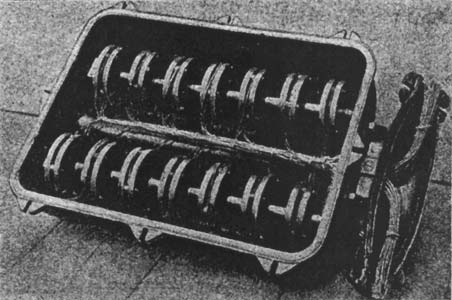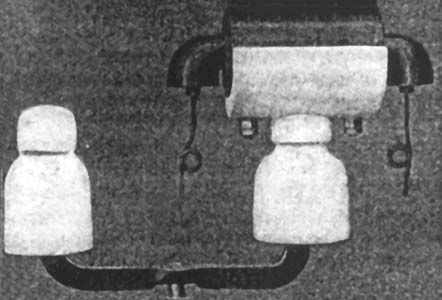[Trade Journal]
Publication: Western Electrician
Chicago, IL, United States
vol. 32, no. 11, p. 209, col. 3
Pupin Telephone Load Coils.
Mention has already been made in these columns of the experiments conducted on telephone circuits near Berlin, Germany, to determine the advantages of applying to the lines the inductance or load coils which have been invented by Professor M. I. Pupin and which are used in this country by the American Telephone and Telegraph Company. The Germany experiments showed that by the application of Pupin's system, an underground cable with a conductor of one millimeter diameter could be rendered equivalent in speaking capacity to an ordinary unequipped overhead wire of two millimeters diameter, or four times the section. The arrangement of the inductance coils was very simple. Each set of 14 coils of annular construction was inserted in an iron box, and the necessary connections to the cable made by means of a special connection box, both being subsequently filled up with compound. Fig. 1 gives a view of such a box with the connections complete.
| |||
| Fig. 1. Pupin Telephone Load Coils. — Underground Cable Arrangement. |
The coils were inserted in the underground cable at an average distance of about 1,300 meters. Each coil introduced a resistance of about 4.1 ohms in each wire of the circuit, and an inductance of about 0.062 henry. As the resistance of the cable conductor, with coils included, amounted to 23.5 ohms per kilometer, while the wire-to-wire capacity was about 0.037 microfarad per kilometer, the value of the attenuation constant became 0.0106. The self-induction of the simple metallic circuit measured with an alternating current of 900 periods per second gave 0.0003 henry per kilometer. The attenuation constant for the simple circuit was therefore 0.06 (at 900 periods). Consequently, by insertion of the coils, the inductance was increased 200-fold, and the attenuation constant reduced to one-sixth.. As a result of this large reduction in the attenuation a considerable improvement in audition was to be expected, and did, in fact, result.
The experiments on overhead circuits were conducted on a line about 150 kilometers long between Berlin and Magdeburg. At every four kilometers distance on a two-millimeter line was inserted a coil of about six ohms' resistance and 0.08-henry inductance. On the completion of the loading the speech over this line was considerably louder than over a three-millimeter line. The installation of the coils was so arranged that at the poles where they were to be inserted double insulators were affixed, on one of w'hich the coil had been mounted as shown in 'Fig. 3, and in this manner the alteration was effected without affecting the insulation of the line. In the course of this experiment it was discovered that each such coil must be provided with a lightning protector; this could have been so arranged that at both ends of the coil the discharge could be led to earth, but as actually erected the coils were bridged by a vacuum protector. The conclusion from this test was that for telephone conductors on Pupin's system one-quarter the weight of copper hitherto used will give the same efficiency, or, in other words, at least four times the distance can be covered by the same weight of copper.
| |||
| Fig. 2. Pupin Telephone Load Coils. — Overhead Arrangement. |


